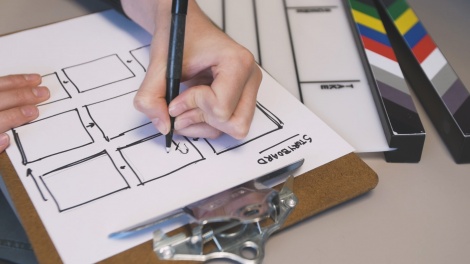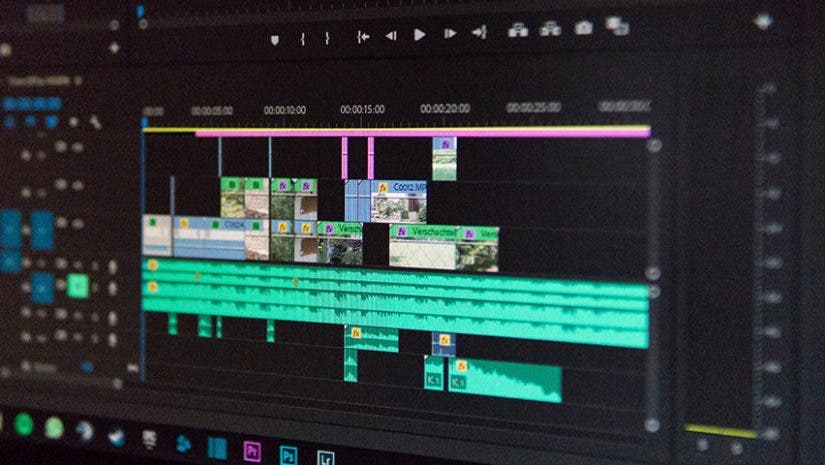Corporate Video Production "For Dummies"
You are scanning your favorite social media page and come across a great video from a company. Wouldn't that be great to create a similar video for your company or organization? But what does it take to produce a video? Well, I hope in this article to help you understand some of the basic terms and personal it takes to produce a video.
The whole process can sometimes be overwhelming. All these terms and people on the crew what does it all mean? Lets begin with the three phases of Video Production.

Pre-Production
This is where the whole thing starts. The better you plan the better your video will be. Your actions in pre-production can set up for everything to succeed or everything to fail. Poor preplanning can also cost you MORE during the next two stages. Proper planning and pre-production will ensure a smooth shoot with a fast and seamless edit down the road. This is where you schedule your shoot days, rehearse, location scout, coordinate schedules, obtain permits, and write your script. You don’t want to skimp on the pre-production phase.
Production
The Production Phase comes with its own set of challenges.
Obviously, this is where you put your ideas in motion. These are the "Shoot Days". Staying on task and within your time frames keep the days going and the crew motivated. This is where all your planning pays off. From location scouting to planning lunches for the crew to coordinating the interviews.

Post Production
Now, lets put this masterpiece together. This is the editing portion of the project. From graphic design to adding music. All your hard work pays off in this phase. This is the most rewarding phase because you truly get to see your video come to life.
Let's go over some of the basic crew members on a standard production. Not all productions have all these crew members but this is to give you an idea of who they are and what their roles are on set.
Director
The Director will be with you through all the phases of the video as the creative lead. It is your job as a company representative to be clear on your goals. You should have a handle on the audience you want to target, and to explicitly communicate your branding with the Director. The Director will turn this marketing message into an exceptional story.
Scriptwriter
A well thought-out script is your map and battle strategy. A script is more than just copy, dialogue, and scene descriptions. A good scriptwriter will capture your vision while crafting a shooting plan that makes sense to the crew and the talent. After the script is finalized, a proper storyboard can be created.
Location Scout
Your location scout figures out where the video shoot is going to take place. This might be in a studio or on location. Your video shoot may require multiple locations, and each will require permits and planning for logistics.
Director of Photography (DP)
This person designs the lighting and helps the director choose lenses and framing to make sure the Director’s vision is achieved. Sometimes the DP also operates the camera if there is not a separate camera operator.
Gaffer
The Gaffer, sometimes called the Lighting Technician, is the head electrician and one of the DP’s essential crew members. This is the person responsible for executing the lighting on set. The Gaffer is well-versed in all lighting equipment and is critical in figuring out power needs.
Key Grip
The Key Grip is the DP’s other essential crew member. The Key Grip’s duties include shaping the light, rigging, and providing and constructing camera support equipment.
This equipment can be pretty heavy-duty and includes tripods, dollies, cranes, jibs, tracks, and rigs. Depending on the complexity of your shoot, the Grip’s job can be quite involved.
Best Boy/Best Girl
The Gaffer and Grip might each have their own assistants.
These assistants are known as the Best Boy/Girl Electric, and Best Boy/Girl Grip, respectively.
Continuity Supervisor
The Continuity Supervisor (also known as a Script Supervisor) makes sure that the appearances of the set and actors/cast look consistent shot-by-shot.
For instance, a cast member's hair should be parted the same way throughout a scene in every shot. The level of water in their drinking glass should be the same. The lighting should also be the same, even if it took a whole day to shoot a scene, especially where the natural lighting might have changed.
Without a good continuity person on set, you run the risk of having your video look fragmented and inconsistent shot-by-shot, which can be distracting and leave your audience feeling like your video is amateurish.
Video Editor and Sound Editor
The Video Editor runs the show in the post-production phase. To be clear, they still have to answer to the Director and the Client.
There are rough cut editors who assemble the footage together, online editors who will do the fine editing and tweaking, special effects editors who will create animations and special transitions, and audio editors who handle dialogue, music and sound effects. Depending on the complexity of the project, sometimes all these various editing jobs are done by different people, or sometimes they are more or less done by the same person, with or without the help of an Assistant Editor.

Comments
Post a Comment